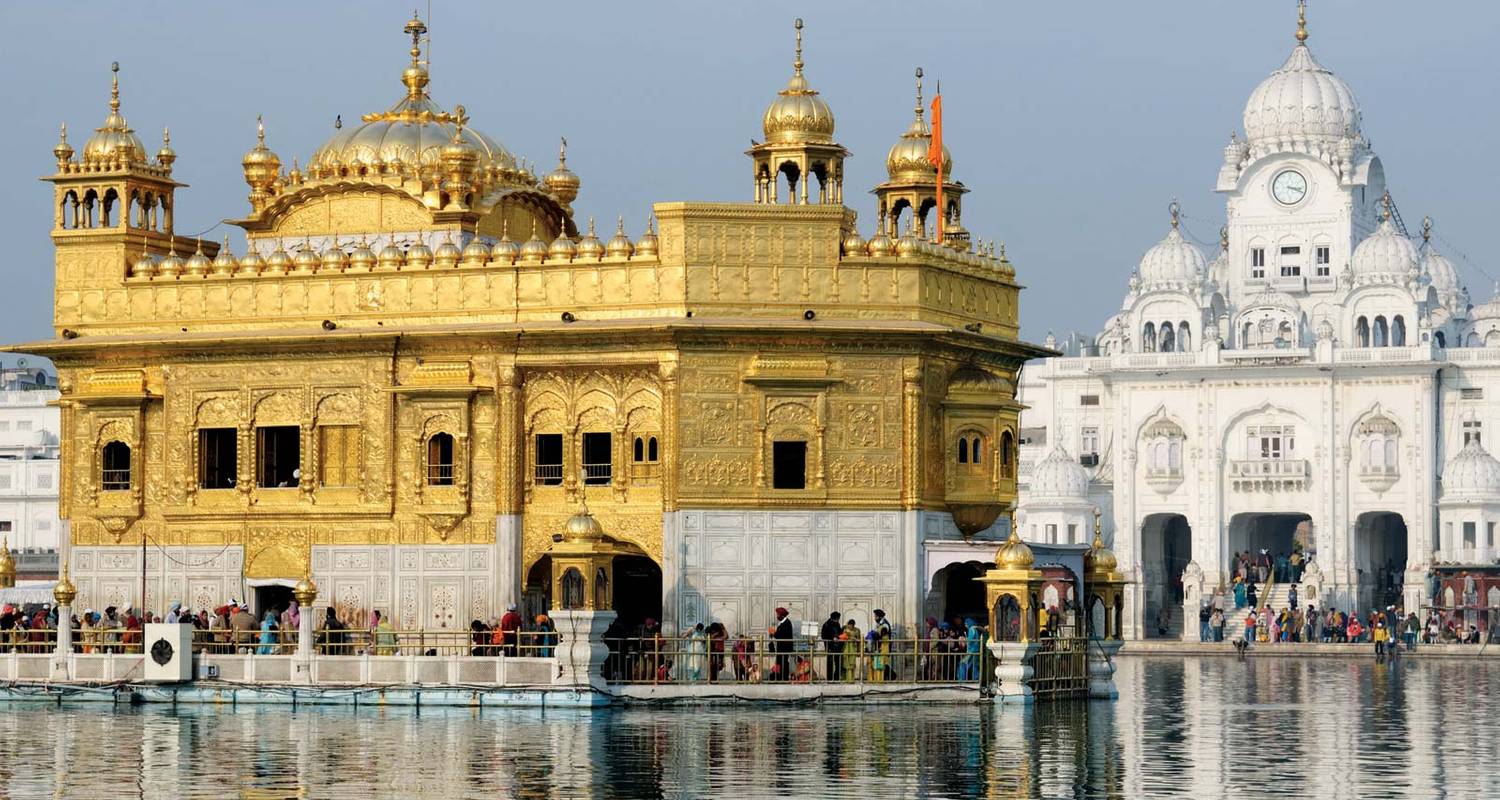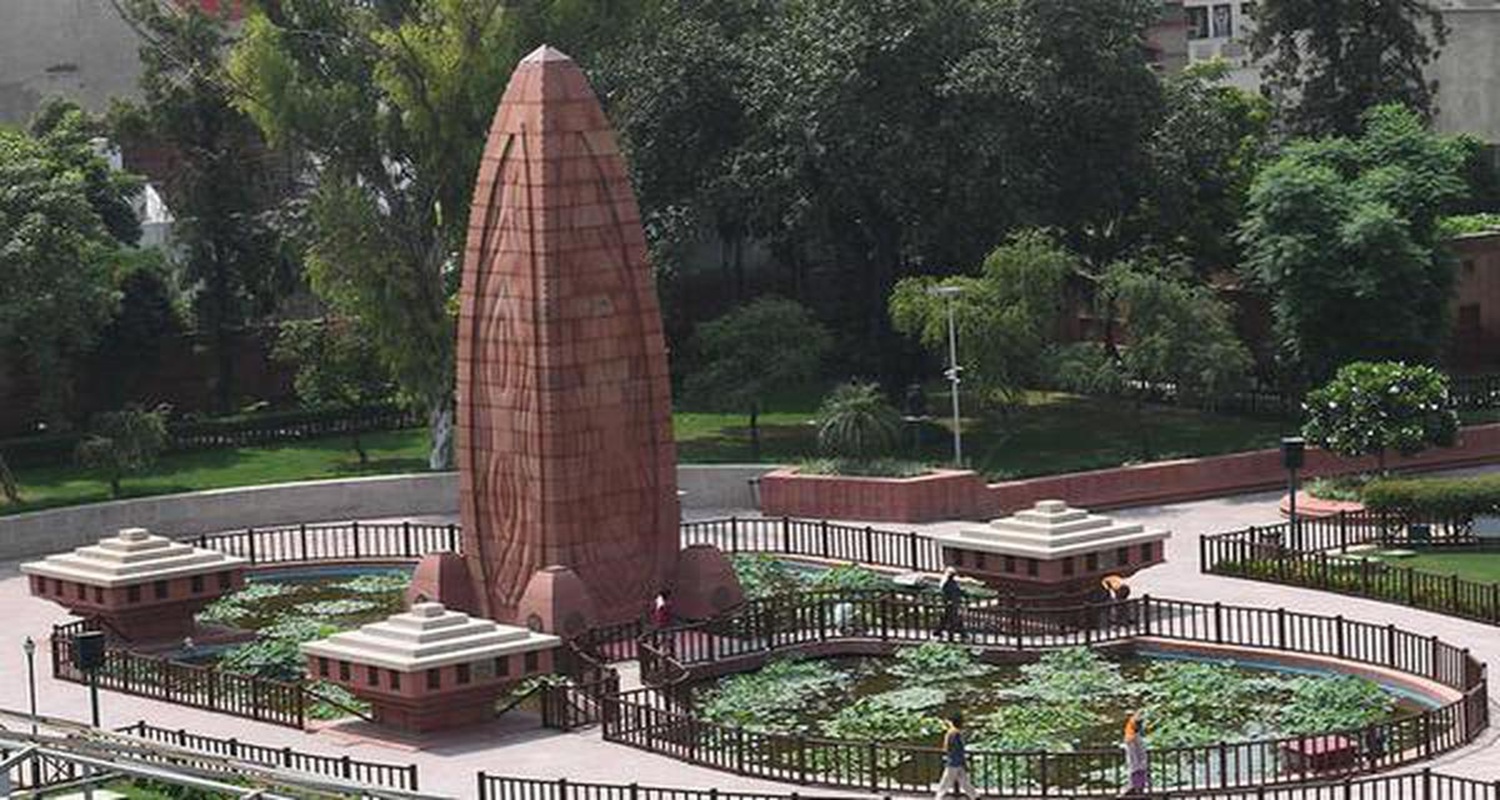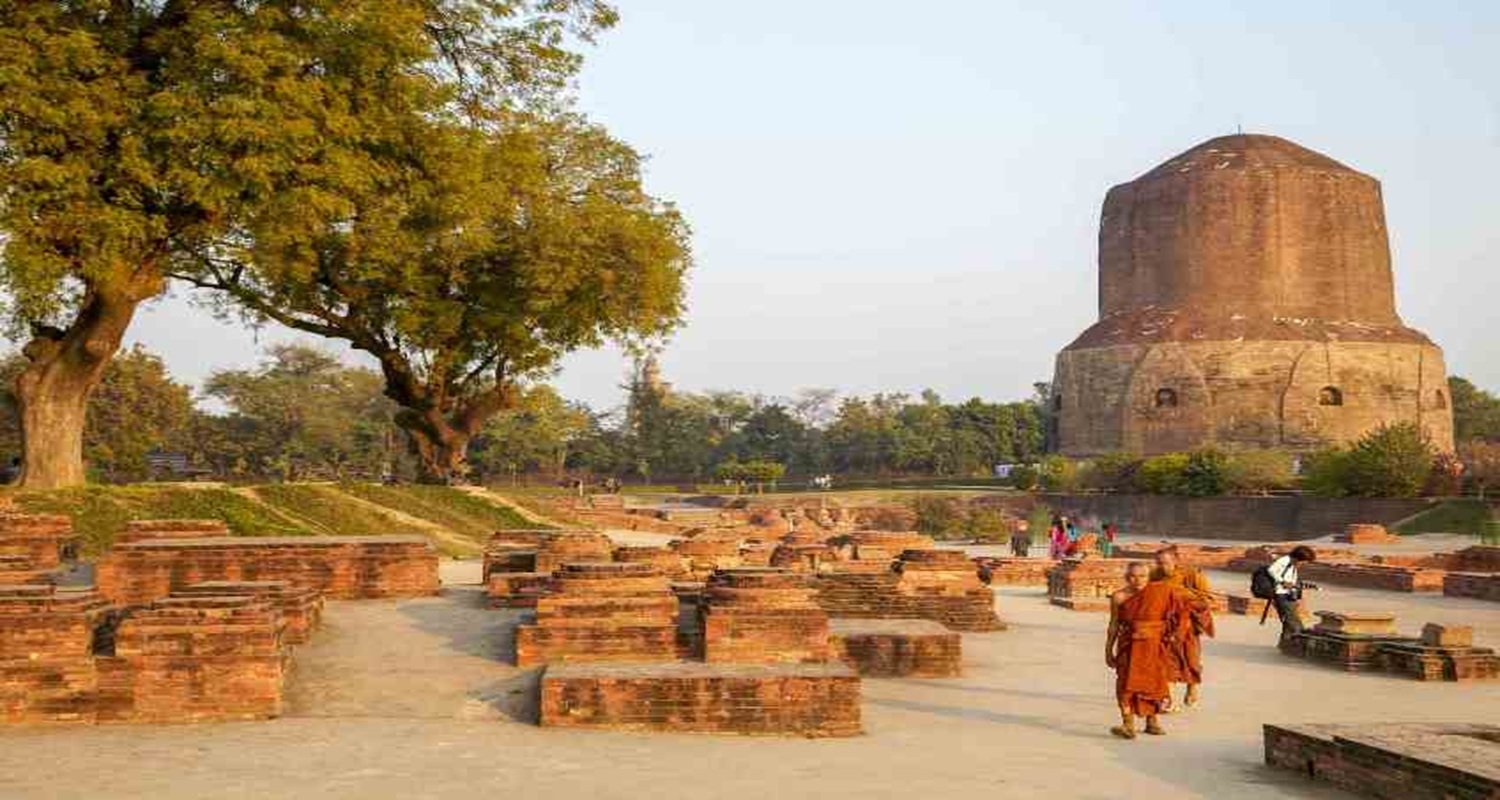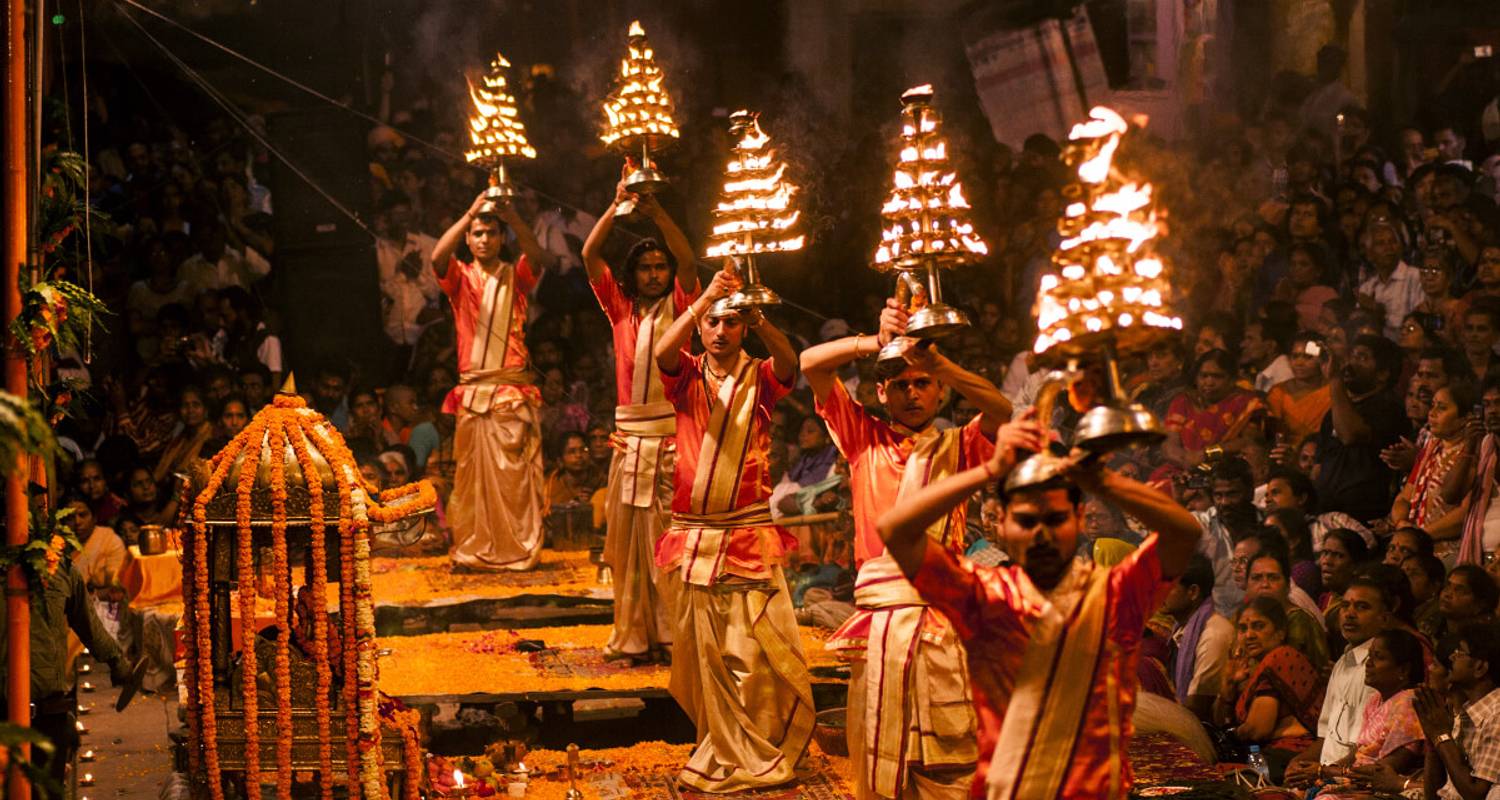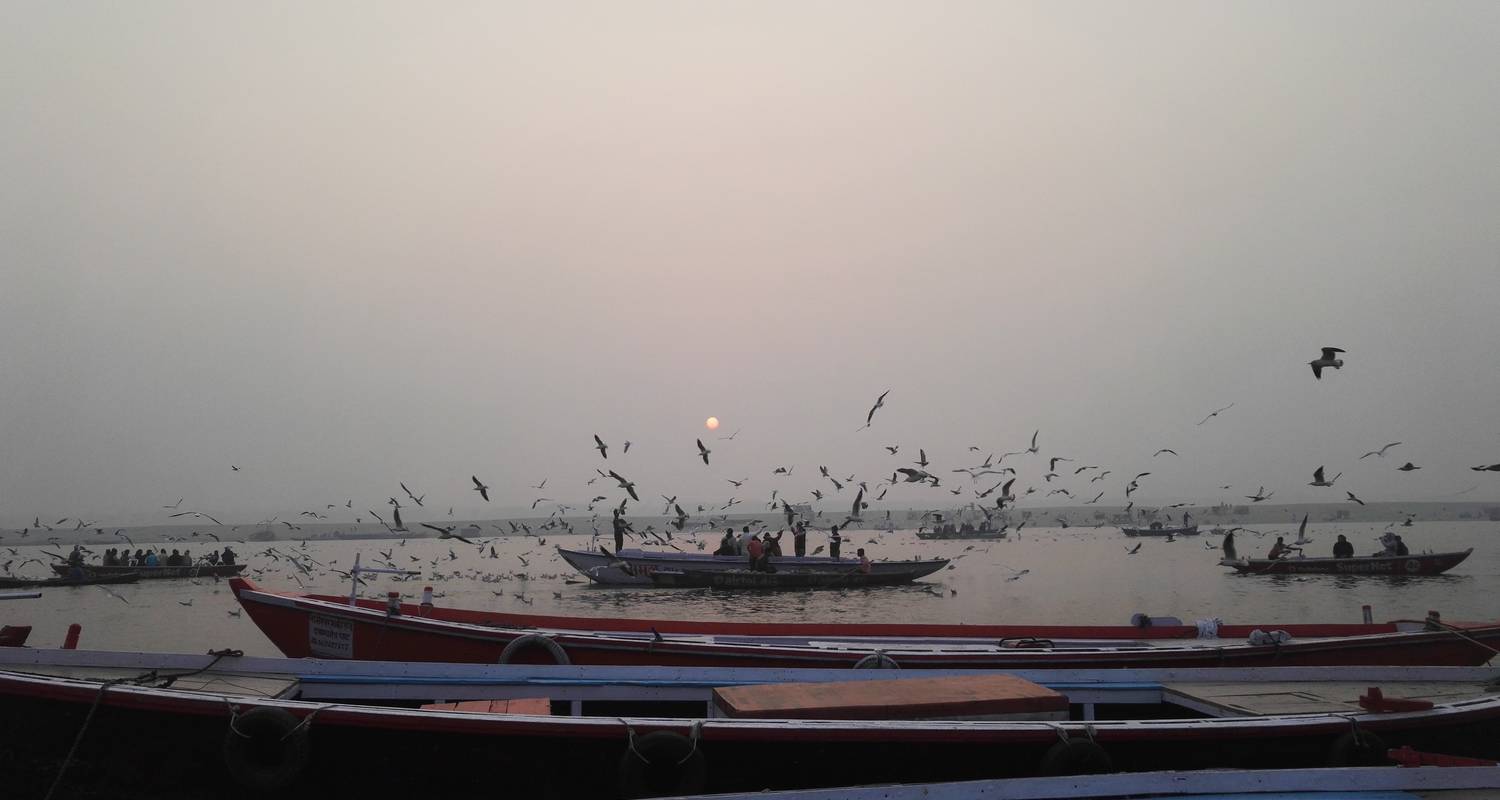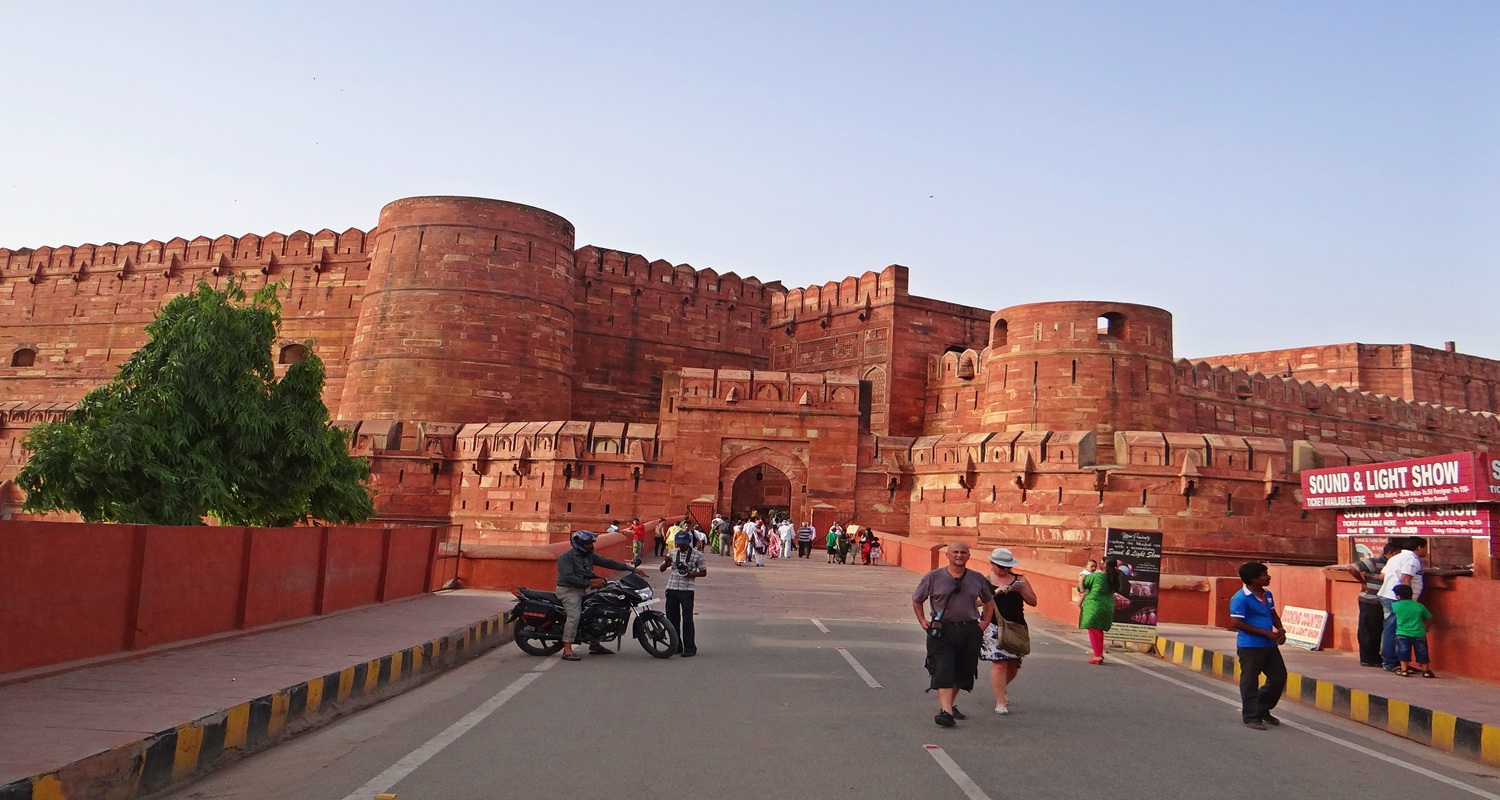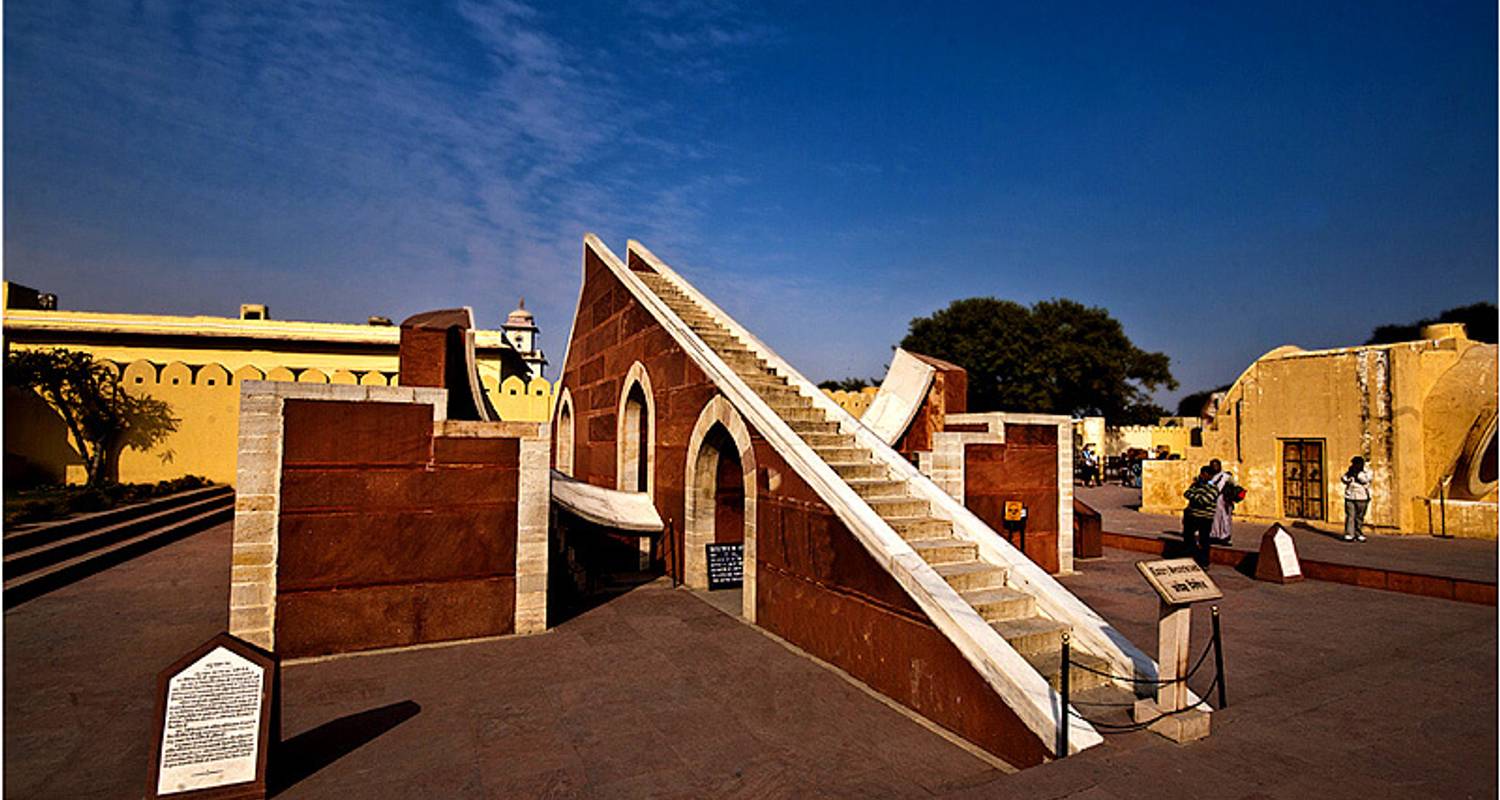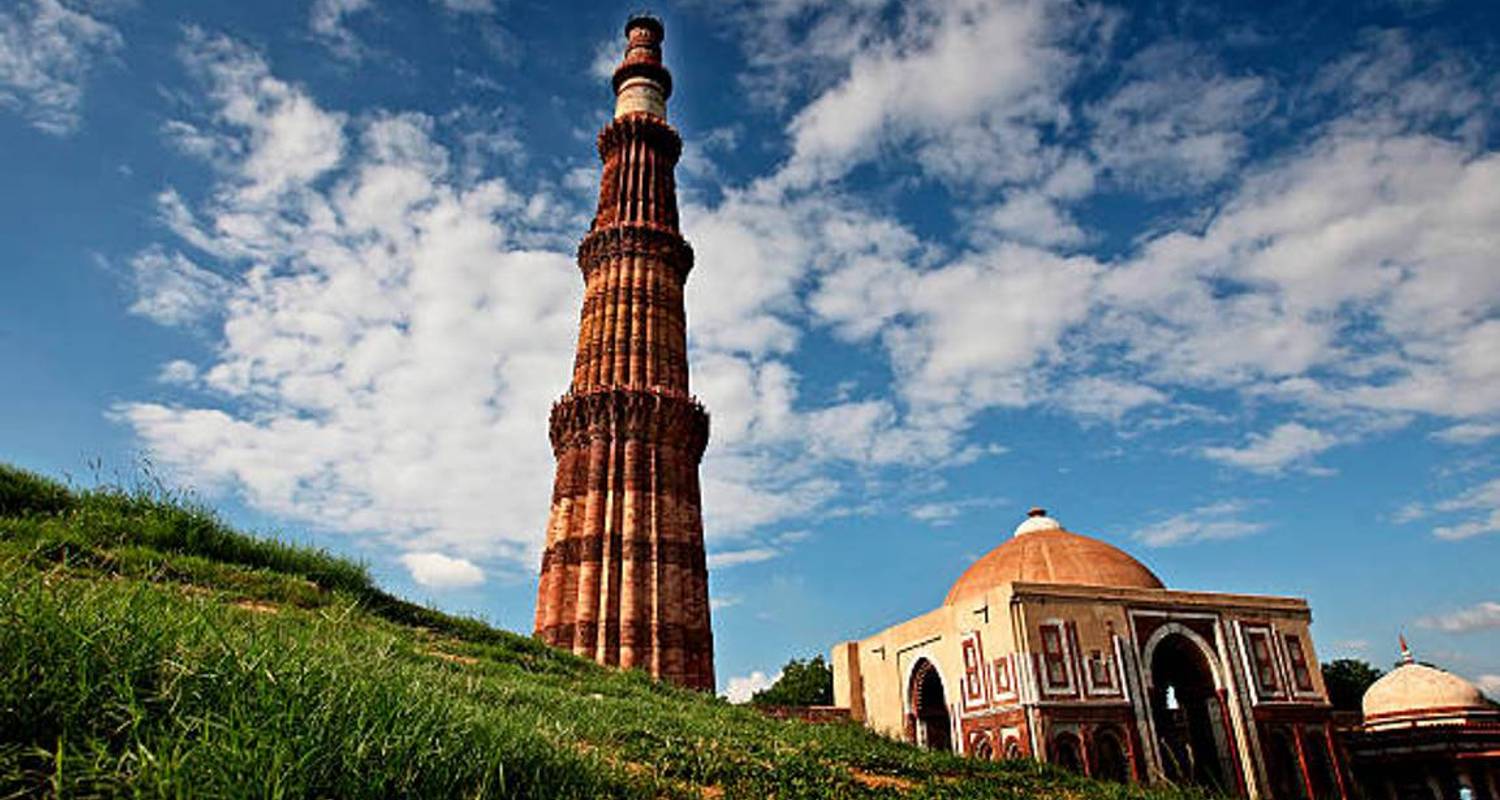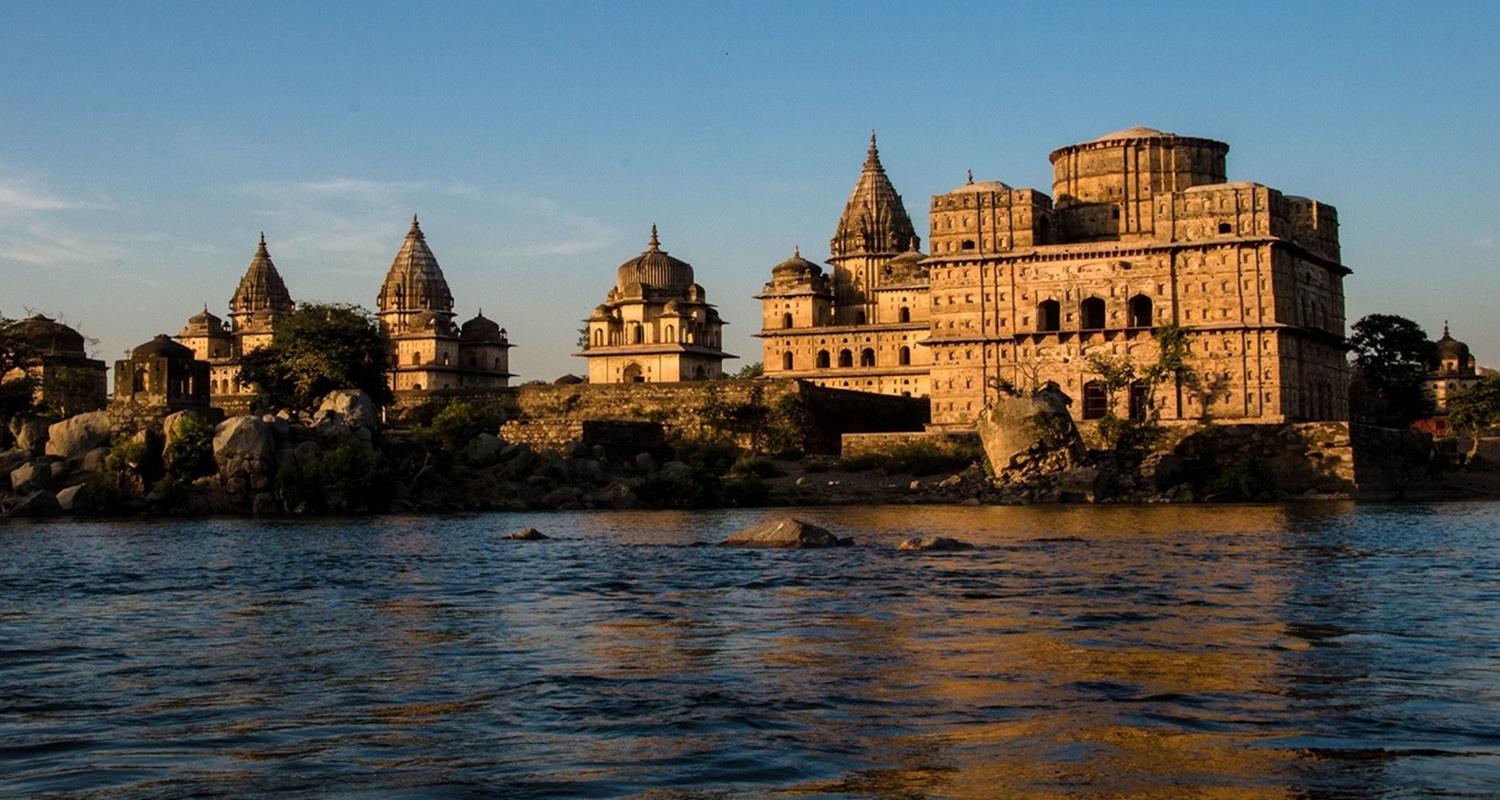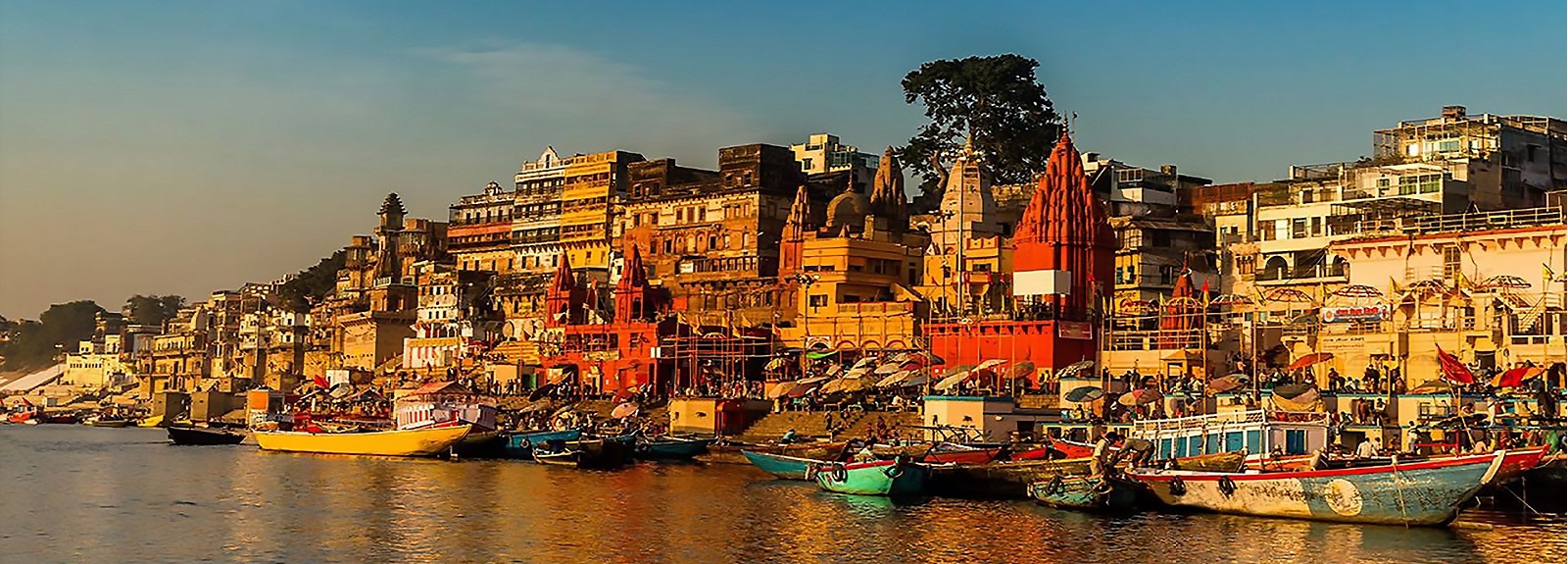
Rajasthan
Body Mind & Soul
Included
INR 110773 Per Person
3-4-5 stars
Travel Duration
12 Days / 11 Nights
Included in the trip
Individual departures
All Round The Year
Embark on a soulful 12-day pilgrimage with My Tour Advisor, designed to refresh your spirit, heal your senses, and connect you deeply with India’s sacred essence. Body Mind & Soul is more than just a journey—it’s an immersive passage through spiritual cities, healing traditions, timeless temples, and places where faith manifests quietly and powerfully.
Your odyssey begins in Delhi—where the pulse of ancient rituals and modern life coexist. Tour Old Delhi’s Jama Masjid and Chandni Chowk, visit serene sanctuaries like Raj Ghat, and trace history at monuments such as Qutub Minar and Humayun’s Tomb.
Next, you journey through Jaipur and Agra, where royal palaces, majestic architecture, and Mughal legacy set the stage. From the grandeur of the Taj Mahal to the grandeur of Amber Fort, each monument carries stories of devotion and artistry. Then travel to Mathura, birthplace of Lord Krishna, a city steeped in devotional music, temple rituals, and timeless myth. Let spiritual melody guide you forward to Khajuraho, where ancient sculptural art celebrates divine energy and tantra.
In Varanasi, allow the holy Ganges to touch your soul as you witness early morning rituals, gliding boats, sacred aartis, and timeless prayers at the riverbank. Here, faith is visible in every sunrise and every moment of ritual. Your spiritual voyage crescendos in Amritsar, home of the Golden Temple. Stand in silent awe as devotees bathe in the Amrit Sarovar, taste langar served with humility, and feel the spiritual glow at dawn and dusk.
Throughout, My Tour Advisor ensures seamless travel—carefully chosen accommodations, private transport, expert spiritual guides, and authentic experiences. This “Body Mind & Soul” journey is tailored for travelers seeking inner peace, inspiring heritage, and authentic spiritual discovery. Return home not only with images and memories—but with the calm, the clarity, and the sacred stillness that stays long after the journey ends.
Stages Of Tour
Day 1
ARRIVAL IN DELHI & SIGHTSEEING
Welcome to DELHI, The Capital of India. Your flight would land at INDIRA GANDHI INTERNATIONAL AIRPORT. After landing kindly head towards the immigration department and get your passport stamped. Immigration Department would stamp the Visa on your Passport. After the Immigration and Custom check Kindly Take an Exit from the Airport from Exit Gate No 4.
MY TOUR ADVISOR’S Representative would be waiting for you to welcome you outside the Gate No 4.
After the Meet Proceed towards the Visit of the Capital of India. You would be Covering following Monuments and activities.
1. VISIT OF OLD DELHI & JAMA MASJID
First you would be taken to the Old Part of the city, also Called as the Old City. It was once built by Emperor Shahjahan and was named Shahjahanabad. You will be visiting the JAMA MASID, the biggest Friday Mosque of India, which can host up to 20,000 Worshippers.
After the visit you can enjoy a Ride on Pedal Rickshaw through the narrow alleys of Famous Chandni Chowk Market which is famous for textiles, street food, spices, and many other items.
2. VISIT OF RAJ GHAT
After the visit of Jama Masjid Proceed Towards the Visit of RAJ GHAT which is the cremation ground of father of the Nation MAHATMA GANDHI.
3. PANORAMIC TOUR OF LUTYENS DELHI
After Paying Homage to the tomb of Mahatma Gandhi, Explore the Lutyens Delhi, Drive through India Gate, Indian Parliament and Government House.
4. VISIT OF QUTUB MINAR.
In the End Proceed towards the visit of Qutub Minar. It was built by First Muslim Ruler Qutbuddin aibak. After conquering the the last Hindu dynasty of Delhi. The Minar is a conical structure with a height of 72 metres. Once it was the most dominating structure of delhi.
After the visit you shall be transferred to your Hotels for check-in. Overnight Stay in DELHI.
Day 2
DELHI – JAIPUR (260 KM – 5 HOURS)
After breakfast. Start your drive towards JAIPUR, also called as the pink city. It will take you 5 to 6 Hours to reach Jaipur. On arrival you would be taken to your hotel for check-in.
In the afternoon you will be visiting following monuments.
1. VISIT OF GALTA JI TEMPLE
Galta ji is a religious shrine located at the outskirts of the city in the middle of the Hills. It was the meditating place for the Rishi Galav. The shrine has a religious Pond which is feed by natural spring water. Devotees come to GALTA ji to take a holy dip in the pond and pay homage to the Rishi Galav.
Now the Temple is more famous for the Monkeys who have found this place a natural habitat, hence the place has Acquired the name as Monkey Temple.
2. VISIT OF BIRLA TEMPLE
After the Galta Temple visit, Proceed towards the visit of Birla Mandir. Built in white marble, Birla Mandir is located in the centre of the city and dedicated to Lord VISHNU and Goddess Laxmi. It is one of the important
hindu temple of the Jaipur.
After the Visit Return to the Hotel for your overnight Stay.
Day 3
JAIPUR SIGHTSEEING
Jaipur as a city came in to existence in the year 1727 when current Maharaja Jai Singh decided to built a new city to accommodate the rising population of the city. He envisioned a planned city, drawing on scientific and architectural principles of the time, making it one of India's first planned cities. The city's layout, based on Vastu Shastra and Shilpa Shastra, features a grid-iron plan with nine sectors. Jaipur's historical walled city was completed within four years, showcasing a blend of ancient and contemporary architectural styles.
Full day dedicated to the visit of the city of jaipur. Your will be covering following monuments
1. AMBER FORT
Start your day with an Excursion to the Fort Amber, which is located 13 km from the Jaipur city. While on the way take a Photo Stop to take the pictures of Famous HAWA MAHAL at sun rise. Afterwards proceed towards Amber Fort, The fort is perched atop a hill and is famous for its stunning red sandstone and marble structures, including the Sheesh Mahal (Mirror Palace) and royal chambers. You can explore the fort's various courtyards and buildings. You can choose to reach up to the top of the hill on an elephant Back.
2. CITY PALACE
After wards Visit the City Palace Jaipur, Located in the heart of the Pink City, City Palace was built by Maharaja Sawai Jai Singh II in the early 18th century, around the time Jaipur was founded. It's a blend of Rajput, Mughal, and European styles. The complex includes courtyards, gardens, and several buildings. Like Chandra Mahal – Still partially a royal residence. Some parts are open to the public as a museum showcasing royal costumes, artifacts, and more. Mubarak Mahal – A museum with textiles, including royal robes and costumes. Pritam Niwas Chowk – Famous for its four beautifully decorated gates, each representing a different season and Hindu deity. Diwan-i-Khas and Diwan-i-Aam – Halls of private and public audience with antique furniture, huge silver urns (used to carry Ganga water), and royal memorabilia.
3. ASTRONOMICAL OBSERVATORY (JANTAR MANTAR)
Later Visit Jantar Mantar, It is a fascinating UNESCO World Heritage Site, it's one of the most well-preserved and largest astronomical observatories in the world. It includes sophisticated tools for the calculation of eclipses and for the detection of the position of stars, the calculation of ascendants. The Principal Attraction of the building is 27 meter high sundial which is located in the center of the observatory and is able to calculate the time up to 2 seconds of precision.
After the visit explore the old city and its Vibrant Market. Later Return to the Hotel for Overnight Stay.
Day 4
JAIPUR – ABHANERI - FATEHPUR SIKRI – AGRA (230 KM – 5 Hrs Approx)
After a sumptuous Breakfast, Start your drive towards Agra, Along the wat take a stop at following attractions.
1. ABHANERI STEP WELL
The Abhaneri Stepwell, also known as Chand Baori, is one of the largest and most visually striking stepwells in India. It’s located in the village of Abhaneri in the Dausa district of Rajasthan. It is a stunning example of ancient Indian engineering and design, with precise and symmetrical patterns.
2. FATEHPUR SIKRI
Fatehpur Sikri, located about 40 kilometers west of Agra, is a UNESCO World Heritage Site and one of the finest examples of Mughal architecture in India. Built in the late 16th century by Emperor Akbar the Great, it served as the capital of the Mughal Empire for a brief period from 1571 to 1585. Akbar constructed this magnificent city to honor the Sufi saint Sheikh Salim Chishti, who had blessed him with the prophecy of a male heir. The city is a blend of Islamic, Hindu, and Persian architectural styles, showcasing Akbar’s vision of a unified empire. After the visit proceed towards Agra
On arrival in agra transfer to the Hotel. Checkin & Overnight stay in Agra.
Day 5
AGRA SIGHTSEEING
Located in Uttar Pradesh, Agra is a city steeped in history, heritage, and architectural splendor. Best known as the home of the Taj Mahal, one of the Seven Wonders of the World, Agra draws millions of visitors from across the globe. Once the capital of the Mughal Empire, the city showcases stunning examples of Mughal architecture, including the majestic Agra Fort and Baby Taj. Beyond its monuments, Agra offers a rich cultural experience with bustling markets, traditional crafts like marble inlay work, and flavorful Mughlai cuisine. Agra is not just a destination—it is an unforgettable journey through time, beauty, and imperial legacy. Full Day Dedicated to the visit of the City and you will be covering Following monuments starting with Tajmahal.
1. TAJMAHAL
Built by Emperor Shah Jahan for his beloved wife Mumtaz Mahal. Taj Mahal is not just a monument—it's a timeless poem in white marble, a symbol of undying love etched into history. Made of shimmering white marble and adorned with intricate carvings and inlay work, the Taj Mahal is a masterpiece of Mughal architecture, blending Persian, Islamic, and Indian styles. Nestled along the Yamuna River, it whispers stories of passion and devotion, leaving every visitor touched by its beauty. It is, truly, love immortalized in stone.
2. RED FORT AGRA
After the visit of Tajmahal proceed towards Red Fort. It is a majestic red sandstone fortress located on the banks of the Yamuna River in Agra. Built primarily by Emperor Akbar in the 16th century and later expanded by his successors, the fort served as the main residence of the Mughal emperors. Enclosed within massive walls are a series of elegant palaces, audience halls, and mosques, including the Jahangiri Mahal, Diwan-i-Khas, and Moti Masjid. A fine example of Mughal architecture, blending Islamic and Hindu elements, Agra Fort offers a glimpse into royal life and India's rich historical legacy.
3. BABY TAJ
End your day with the visit of Etmad-ud-daulah also famous as Baby TAJ. Itmad-ud-Daulah is a beautiful Mughal mausoleum located on the banks of the Yamuna River in Agra. Commissioned by Empress Nur Jahan in memory of her father, Mirza Ghiyas Beg (Itmad-ud-Daulah), it was completed around 1628. This exquisite tomb is considered a precursor to the Taj Mahal, showcasing intricate marble inlay work, delicate carvings, and fine pietra dura designs. Constructed entirely of white marble, it represents a significant transition in Mughal architecture from red sandstone to marble. The garden setting and stunning craftsmanship make Itmad-ud-Daulah a hidden gem often overlooked by travelers.
After the visit return to the Hotel for your Overnight Stay.
Day 6
AGRA – ORCHHA (260 Km | 3½ Hours)
Early Morning transfer to the train station to take the train for Jhansi. The journey would last for 3 ½ Hours. On arrival at Jhansi Station. Meet our representative in front of your coach, he will accompany you to the vehicle. Meet your Driver and drive to Orccha, once the famous feudal State Capital of Bundelkhand, here you will find a small village full of colours and beautiful temples with high Shikhara, called Chattris in the local language. It is a beautiful place on the banks of the river Betwa. On Arrival checkin to the Hotel. Later visit the Fort Complex with its Following Monuments
1. JAHANGIR MAHAL
Jahangir Mahal in Orchha is a stunning example of Indo-Islamic architecture, built in 1605 by Raja Bir Singh Deo to honor Emperor Jahangir’s visit. This three-storied palace is known for its symmetrical design, ornate balconies, arched doorways, and massive domes. Its grand entrance, adorned with carved elephants, leads to a spacious courtyard surrounded by intricately designed chambers. The palace reflects a perfect blend of Mughal aesthetics and Rajput military architecture. Built for ceremonial purposes rather than residence, it offers sweeping views of the Betwa River and surrounding landscape. Jahangir Mahal remains one of Orchha’s most iconic and majestic landmarks.
2. RAJA MAHAL
Raja Mahal, located within the Orchha Fort complex, was built by Raja Madhukar Shah in the 16th century as the royal residence of the Bundela kings. From the outside, it appears simple and austere, but the interiors are richly decorated with exquisite murals and frescoes depicting scenes from the Ramayana, Mahabharata, and local legends. The palace features grand halls, jharokhas (balconies), and intricately painted ceilings, showcasing traditional Bundela art. Unlike Jahangir Mahal, Raja Mahal was a functional living space, emphasizing comfort and devotion. Its spiritual ambiance and artistic detailing make it a captivating site for history and culture lovers.
3. ROYAL CENOTAPHS
The Royal Cenotaphs of Orchha, known as Chhatris, are a group of 15 stunning memorials built to honor the Bundela kings and their families. Located along the serene banks of the Betwa River, these structures date back to the 16th to 18th centuries. Designed in classic Rajput architecture, each cenotaph features ornate domes, arched doorways, and towering pavilions. The most notable one commemorates Raja Bir Singh Deo. Though not actual tombs, they symbolize royal cremation sites and pay homage to the legacy of Orchha’s rulers. The site offers a peaceful atmosphere and picturesque views, especially during sunrise and sunset.
After the visit take a stroll in the market or visit other temples like Chaturbhuj Temple or Raja Ram Temple. Overnight Stay in Orchha.
Day 7
ORCHAA – KHAJURAHO (200 KM | 4 Hours)
After the Breakfast, Start your Journey towards Khajuraho. On arrival Check-in to the Hotel. In the afternoon visit of the the Khajuraho Temples.
1. KHAJURAHO TEMPLES
famous for their intricate carvings and erotic sculptures. Built between the 10th and 12th centuries by the Chandela dynasty, these temples reflect a unique blend of spirituality, art, and sensuality. Out of the original 85, only 22 temples have survived, showcasing exceptional craftsmanship and architectural brilliance. The temples are divided into Western, Eastern, groups, with the Kandariya Mahadev Temple being the most impressive. A UNESCO World Heritage Site, Khajuraho attracts history lovers, art enthusiasts, and spiritual seekers from around the world.
After the Visit Transfer to the Hotel for an Overnight Stay.
Day 8
KHAJURAHO – PRAYAGRAJ - VARANASI (400 KM | 8 Hours)
After the Breakfast start your journey towards VARANASI, on the way stop at PRAYAGRAJ. Start your day Early and reach to PRAYGARAJ in The Afternoon.
Prayagraj, formerly known as Allahabad, is a historic and sacred city in Uttar Pradesh, India, situated at the confluence of the Ganga, Yamuna, and the mythical Saraswati rivers, known as the Triveni Sangam. It is one of Hinduism’s holiest cities and the site of the Kumbh Mela, the world’s largest religious gathering. On Arrival visit of the SANGAM. Afterwards Transfer to Varanasi. Arrival at Varanasi and check-in to the Hotel.
Day 9
VARANASI SIGHTSEEING
Varanasi, also known as Kashi or Banaras, is one of the oldest continuously inhabited cities in the world and a major spiritual hub in India. Located on the banks of the Ganga River in Uttar Pradesh, it is considered the spiritual capital of India. The city is sacred to Hindus, Buddhists, and Jains, and is famous for its ghats, ancient temples, and ceremonial aartis. People come here to seek moksha (liberation), perform last rites, or simply experience its timeless mysticism. With its rich blend of faith, culture, music, and learning, Varanasi leaves a lasting impact on every visitor.
1. MORNING BOAT RIDE AT THE GANGES
Wake up before dawn and head towards the Ghats to Experience the morning Boat ride on Ganges. Its a spiritually moving experience. As the first light of dawn touches the waters of the Ganga, the ghats come alive with a unique blend of devotion, ritual, and everyday life. From the boat, you witness priests performing aarti, devotees taking holy dips, yogis meditating, and locals beginning their day. The calm of the river, the golden sunlight, and the chants echoing from the ghats create a magical, almost timeless atmosphere. Afterwards visit the KASHI VISHWANATH TEMPLE and take a walk into the Narrow Alleys of the Old City.
2. SARNATH VISIT
In the afternoon visit Sarnath. It is one of Buddhism’s most sacred sites. It is where Lord Buddha gave his first sermon after attaining enlightenment, known as the Dharmachakra Pravartan (Turning of the Wheel of Dharma). The site features important monuments like the Dhamek Stupa, Chaukhandi Stupa, and the Ashokan Pillar with its lion capital, India’s national emblem. Sarnath also houses a rich archaeological museum showcasing ancient artifacts and sculptures. Peaceful and spiritually significant, Sarnath attracts pilgrims and history enthusiasts from around the world, offering a deep insight into the early teachings and spread of Buddhism.
3. EVENING GANGA AARTI CEREMONY
In the evening, proceed towards Dashashwamedh Ghat to witness the daily GANGA AARTI.
It is a captivating spiritual ritual held every evening at Dashashwamedh Ghat. As dusk falls, priests dressed in traditional attire perform the aarti with large brass lamps, synchronized chants, conch sounds, and incense, all offered to Mother Ganga. The atmosphere becomes electric, with glowing lamps, rhythmic mantras, and the river reflecting the golden light. Devotees and tourists gather on the ghats and in boats to witness this mesmerizing ceremony. It symbolizes gratitude to the sacred river and invokes divine blessings. The Ganga Aarti is not just a ritual—it’s a soulful experience that touches every heart.
Afterwards return to the Hotel for Overnight Stay at Varanasi.
Day 10
VARANASI - AMRITSAR (FLIGHT | 1.5 Hours)
Varanasi, also known as Kashi or Banaras, is one of the oldest continuously inhabited cities in the world and a major spiritual hub in India. Located on the banks of the Ganga River in Uttar Pradesh, it is considered the spiritual capital of India. The city is sacred to Hindus, Buddhists, and Jains, and is famous for its ghats, ancient temples, and ceremonial aartis. People come here to seek moksha (liberation), perform last rites, or simply experience its timeless mysticism. With its rich blend of faith, culture, music, and learning, Varanasi leaves a lasting impact on every visitor.
1. MORNING BOAT RIDE AT THE GANGES
Wake up before dawn and head towards the Ghats to Experience the morning Boat ride on Ganges. Its a spiritually moving experience. As the first light of dawn touches the waters of the Ganga, the ghats come alive with a unique blend of devotion, ritual, and everyday life. From the boat, you witness priests performing aarti, devotees taking holy dips, yogis meditating, and locals beginning their day. The calm of the river, the golden sunlight, and the chants echoing from the ghats create a magical, almost timeless atmosphere. Afterwards visit the KASHI VISHWANATH TEMPLE and take a walk into the Narrow Alleys of the Old City.
After the visit return to the Hotel, In the Afternoon Transfer to Varanasi Airport to catch the flight for Amritsar. On arrival at Amritsar Airport meet with our representative and transfer to Hotel.
On Arrival check-in. Overnight in Amritsar.
Day 11
AMRITSAR SIGHTSEEING
AMRITSAR, located in the northwestern Indian state of Punjab, is a vibrant city known for its deep spiritual significance, rich history, and warm hospitality. It is home to the Golden Temple (Harmandir Sahib), the holiest shrine in Sikhism, which attracts millions of visitors from around the world. The temple’s serene beauty, golden façade, and community kitchen (Langar) offering free meals to all are symbols of equality and devotion. Amritsar also holds historical importance due to the Jallianwala Bagh massacre of 1919, a pivotal event in India’s freedom struggle. Just outside the city is the Wagah Border, where the daily flag-lowering ceremony between India and Pakistan draws crowds with its patriotic fervor. Amritsar is also famous for its lively bazaars, traditional Punjabi cuisine, and colorful culture. Whether for spiritual reflection, historical insight, or culinary exploration, Amritsar offers an unforgettable experience to every traveler.
Full day dedicated to the visit of the city.
Start your day with a visit to Jaliawala Bagh Garden which was a witness of a massacre of Indian freedom fighters by British general in 1919. After wards proceed towards the visit of Golden temple. In the afternoon go for an excursion to Bagha Border at the border of India & Pakistan to attend the Beating Retreat Ceremony.
Afterwards return to the city. For a second visit to the Golden temple in the Evening Glowing Light.
1. JALIAWALA BAGH
Jallianwala Bagh is a historic public garden in Amritsar, Punjab, India, that stands as a somber reminder of one of the darkest chapters in India’s struggle for independence. On April 13, 1919, during the festival of Baisakhi, thousands of unarmed Indians gathered here for a peaceful protest against the oppressive Rowlatt Act. Acting without warning, General Reginald Dyer ordered his troops to open fire on the crowd, killing hundreds and injuring many more. The narrow entrance to the garden was blocked, giving people no chance to escape. Today, the site is preserved as a national memorial, featuring the Martyrs’ Well, bullet holes in the walls, and an eternal flame commemorating the victims.
2. GOLDEN TEMPLE AMRITSAR (HARMANDIR SAHAB)
The Harmandir Sahib, popularly known as the Golden Temple, is the most sacred site in Sikhism, located in the city of Amritsar, Punjab. Founded by the fifth Sikh Guru, Guru Arjan Dev Ji, in the 16th century, it was designed as a place of worship open to all, regardless of caste, creed, or religion. The temple’s stunning architecture features a gold-plated sanctum surrounded by a serene water tank called the Amrit Sarovar, from which the city gets its name. At the heart of the temple lies the Guru Granth Sahib, the holy scripture of the Sikhs, continuously recited by priests. A key feature of the Golden Temple is the langar (community kitchen), where free meals are served daily to tens of thousands of visitors. The temple’s four entrances symbolize openness and inclusivity. Beyond its spiritual significance, the Harmandir Sahib stands as a symbol of peace, equality, and the enduring values of Sikhism.
3. BEATING RETREAT CEREMONY
The Wagah Border Ceremony is a daily military ritual held at the Wagah Border, the only road crossing between India and Pakistan, located about 30 kilometers from Amritsar in Punjab. This ceremony, also known as the Beating Retreat Ceremony, takes place every evening just before sunset and is conducted by the Border Security Force (BSF) of India and the Pakistan Rangers. The event includes synchronized high-kicking parades, dramatic foot-stomping, and the ceremonial lowering of the national flags of both countries. It is a powerful display of discipline, national pride, and rivalry, yet it ends with a symbolic handshake between the soldiers as a gesture of respect. Spectators from both nations gather in large numbers, waving flags and cheering with patriotic enthusiasm. The atmosphere is vibrant and energetic, making it a popular attraction for both tourists and locals.
After the visit return to the hotel for overnight Stay.
Day 12
AMRITSAR - DELHI (Train | 6.15 Hours)
You can opt for an early morning visit to Golden Temple. The ambience of Golden Temple at Sunrise is surreal. The morning prayers with the rising sun creates a divine atmosphere.
In the Afternoon checkout from the Hotel and visit the Famous museum of Raja Ranjeet Singh. After the Visit Transfer to Railway Station to catch the train for Delhi.
On arrival in delhi transfer to International Airport to catch the flight for your Onward Destinations.
1. RANJEET SINGH MUSEUM
The Maharaja Ranjit Singh Museum in Amritsar, housed in the former summer palace of the first Sikh ruler, offers a captivating glimpse into the life and legacy of the "Lion of Punjab." Converted into a museum in 1977, it showcases an array of artifacts, including the Maharaja's personal belongings, weaponry, paintings, manuscripts, and coins from the 18th and 19th centuries. Notably, the museum features a replica of the famed Koh-i-Noor diamond, once part of his treasury. Set amidst the serene Ram Bagh Gardens, the museum stands as a testament to Sikh heritage and Maharaja Ranjit Singh's enduring influence.
END OF THE SERVICES
The hotels
My Tour Advisor Provides a wide variety of hotels
Cost Per Person For Different Categories
| # | No of Pax | Standard | Superior | Prestige |
|---|---|---|---|---|
| 1 | 2 Pax | INR 110777 | INR 136000 | INR 166000 |
| 2 | 4 Pax | INR 99000 | INR 122000 | INR 149000 |
| 3 | 6 Pax | INR 94000 | INR 115800 | INR 141000 |
| 4 | 8 Pax | INR 88500 | INR 109000 | INR 132800 |
| 5 | 10 Pax | INR 83000 | INR 102000 | INR 124000 |
Supplements
| # | Plan | Standard | Superior | Prestige |
|---|---|---|---|---|
| 1 | Single Supplement | INR 66000 | INR 81000 | INR 99000 |
| 2 | Half Board | INR 4400 | INR 8800 | INR 13200 |
| 3 | Full Board | INR 8800 | INR 17600 | INR 26400 |
| 4 | Christams Supplement | INR 27600 | INR 34000 | INR 41000 |
| # | Months | Dates 1 | Dates 2 |
|---|
Inclusions
- Accommodation as per Itinerary on twin sharing with Bed and Breakfast Plan.
- All Transport & Sightseeing by private Air conditioned vehicle as per program.
- Local Professional Spanish-Speaking Guide for Sightseeing
- Monument Entrance fees.
- Domestic flight from Varanasi to Amritsar in Economy class (Check-in baggage – 15 Kg.)
- Train from Agra to Jhansi in AC Chair Car.
- Train from Amritsar to Delhi in AC chair Car.
- Rickshaw Ride in Old Delhi
- Visit of Abhaneri Step well - An 8th Century Architectural Marvel
- Hotel/port pickup and drop-off.
- 2 bottles of water per traveler per day
- Travel kit document bag
- One souvenir gift from MY TOUR ADVISOR
- Private and personalized services.
- All taxes, fees and handling charges
- GST (Goods and Services Tax)
Exclusions
- Visa and Insurances
- Food and drinks, unless specified.
- Gratuities (recommended).
- Anything not mentioned and specified in Itinerary and in inclusions.
TOUR HIGHLIGHTS
In accordance to the COVID 19 pandemic all our tours are operated with all precautionary measures including SANITIZED CARS AND HOTELS/COMPLIMENTARY SANITIZERS/MASKS (Your safety is our priority)
- All Inclusive Tour. – Hotels /Transport / Guides
- Explore the alleys of Old Delhi in a Rickshaw Ride
- Amer fort at Jaipur
- Charm of the Pink City of Jaipur
- Tajmahal - One of the seven wonders of the world
- Ghost walled fort of Fatehpur Sikri
- Abhaneri Step well - An 8th Century Architectural Marvel
- Khajuraho Temples.
- Evening Aarti and Morning Boat ride at Varanasi.
- Visit Of Golden Temple.
Enquiry Form
Please fill the below form for more information
PASSPORT
A valid passport is required for at least six months before Boarding the Flight. We encourage you to check the validity of the passport and we advise you to bring a photocopy of your passport and the page of the visa obtained, or carry multiple copies of ETA, useful in case of loss.
INDIAN CONSULAR VISA
To enter India, an entry visa issued by the Indian Embassy is required. It is categorically necessary that all travellers, whose itinerary includes leaving and returning to the country, have obtained a double or multiple visas. During the flight to India you will be given a disembarkation form to be filled in with your data and to be delivered to passport control. The detachable part completed with the customs declaration will be returned to you, and must then be handed over to the customs upon leaving the airport.
INTERNAL FLIGHTS
Air tickets for flights within India or between India and Nepal, if not included in the intercontinental flight, will be collected by your companion or our representative and will be delivered to you upon arrival. Flights within India and between Nepal are the trickiest part of the journey. We recommend a lot of patience, because it is not uncommon for flights to suffer delays, cancellations or make intermediate stops not foreseen at the time of booking. It is therefore essential to always go to the airport on time (about 2 hours before the flight). In the event of cancellations, however, the companies, according to the new regulations, will refund the cost of the ticket but have no obligation to re-route. The rebooking will then be done by our local office by purchasing a new ticket. Purchasing it on the same day, the same fare as the canceled flight is not always available. In case this exceeds that of the cancelled flight, the difference must be paid directly on the spot. If there are no other flights on the scheduled route, a land transfer by car/bus will be provided in lieu of the ticket.
DOMESTIC FLIGHTS BAGGAGE ALLOWANCE
Since recently (August 2013) both on intercontinental flights and on internal flights, the companies are very strict in calculating the weight of the baggage and each additional kilogram is subjected to an extra payment according to the rules of the company itself. In this regard, we report the scheme concerning the baggage allowance for the economy class granted by each airline for flights within India and between India and Nepal:
Airline
Hand Baggage Weight
Checkin Luggage Weight
Air India
7 kg + Laptop
15 kg
Jet Airways
7 kg + Laptop
15 kg
Indigo & Spice Jet
7 kg + Laptop
15 kg
Go Air
7 kg + Laptop
15 kg
Jet Lite
7 kg + Laptop
15 kg
The company has the right to apply an extra cost for each kilogram exceeding the above, (indicatively from 4 to 8-euro per kg).
LOCAL GUIDES AND ESCORT TOURS
For the entire duration of the group tour, starting from your arrival in India, you will be assisted by a Tour Escort or local Guide (for individual tourists) in each city who will take care of every technical-organizational detail. The tour escort will also act as a local guide in the cities for which he is licensed. In the others he will be accompanied by a local foreign speaking guide or English-speaking guide as per the provisions of the Indian government. In the latter case, he will provide for the translation.
In many cities of India, in fact, there are no local guides speaking foreign languages (especially in southern India, central India and some parts of Rajasthan), or there are few.
THEFT
We remind you that passport, telephone and valuable accessories in general must always be kept by the passenger and never left unattended, as no service facility takes charge of any loss/theft during the tour. It is also good to have all the emergency bank numbers with you in case of need.
TIPS
In India, tipping is a custom rooted in local custom. The amount of tips is at the discretion of the passengers, but as a rule they are in the local custom. In restaurants it is customary to leave 10% of the bill as a tip.
A basic tip:
For half day drive with driver Rs. 300/ full day Rs. 500.
For porters Rs. 70 per bag
For Half Day Local Guide Rs. 500/ Full Day Rs. 800
Per Day Escorts Rs. 1000
(The amount is in total and refers to a group of 2/3 people, it can be increased if you are traveling in a group with more people)
For groups, even small in number but with tour escorts, it is advisable to give the guide a sum at the beginning of the tour (approximately 40/45 euros for 7/9 day tours) and he will distribute them appropriately, thus avoiding boring and continuous collections.
N.B. (This figure does not include a possible tip for the companion)
ROOM AVAILABILITY
The rooms are available until 12.00 on the day of departure. In India there is no day use system, therefore if the rooms want to be kept until departure they will have to be paid for the entire following night.
CHECK-IN ONLINE
We inform you that the check-in procedure can take place via online check-in, which can be implemented from the airlines' websites or via the automatic check-in devices specifically installed at the airport.
CLIMATE
The most pleasant season runs from mid-November to March, with moderate heat and low rainfall. The maximum temperatures vary from 27° to 30°, the minimums from 16° to 22°. In March the temperatures begin to rise with highs reaching 38°. The month of August records the peak of the monsoon season (from June to October) which invests the south-western regions with rainfall that varies in intensity according to the areas, limited in some to severe thunderstorms. In October and in the first half of November the south-eastern part of India is affected by a north-east monsoon.
CLOTHING
Clothing must take into account the period and the regions where you go. In southern India, light clothing can be worn all year round, without forgetting long trousers and long-sleeved shirts to protect against insects. During visits to the temples, excessively small clothing should be avoided. For those traveling to the northern regions, warmer clothing is needed, as the temperature can approach freezing in winter. In the desert region of Rajasthan the temperature varies a lot between day and night.
SHOPPING
In India the variety of handicraft production is practically infinite. Indian muslins, canvases, silks and brocades have enjoyed worldwide fame since ancient times and have been appreciated for the quality of the fabric, the beauty and resistance of the colors, the originality of the designs. Even today the brightly colored silk saris, embroidered or woven with gold or silver threads, the brocades of Varanasi as well as the cottons of Rajasthan, the wool or wool and silk carpets of Kashmir and Uttar Pradesh are renowned. The manufacture of fabrics is just one aspect of the varied and rich Indian craftsmanship which ranges from wood carving (teak, sandalwood, rosewood, ebony) spread almost everywhere, especially in Karnataka, to Agra marble inlays or the stone sculptures of Orissa, from ceramics to hand-painted lacquers, from brass and copper pottery to bamboo and leather objects. The skill of the Indians in the cutting and processing of semi-precious and precious stones has been known since ancient times. Haggling in the bazaars is common practice.
Do not buy souvenirs that cost animals their lives or harm nature.
FOOD AND DRINK
It is recommended to drink only bottled or boiled water (found in almost all restaurants and hotels). Carefully avoid tap water and ice in drinks. It is advisable to consume only well-cooked foods and packaged foods, avoiding raw vegetables and fruit that cannot be peeled.
MEDICAL ASSISTANCE
In India there is a great variety of doctors practicing the most diverse forms of therapy and the only hospital in Europe is located in Delhi. It is advisable to bring from Italy tablets against any gastrointestinal disorders and medicines that are difficult to find locally.
BEHAVIOUR
Before entering the temples, mosques and or gurdwaras it is essential to take off your shoes, generally it is allowed to keep your socks on. To avoid discomfort, do not bring leather articles of any kind with you, because they could arouse some opposition. Inside places of worship, tourists can move as they please and sometimes attend religious rites, for which it is preferable to wear modest clothes, avoiding tops, skirts and shorts. A small donation will be welcome.
The folded hands namaste is the typical Indian greeting and its use will be greatly appreciated. Especially in cities, men will gladly shake hands with tourists; in fact, this gesture is considered particularly cordial. The majority of Indian women, on the other hand, are reluctant to shake hands with a man, both Indian and foreign (a possible refusal should not be considered an offense) and are generally surprised by the informality of relations between the two sexes used in western countries. In private homes you will be welcomed as guests of honor and your lack of familiarity with local customs and traditions will be understood and accepted. If you should be tempted to eat with your fingers, remember to use only your right hand.
GASTRONOMY
Indian cuisine varies according to the regions, with notable differences between the southern and northern regions, but has as a common feature the wise use of spices which are used not only to flavor foods but also to aid digestion. In the north it looks remarkably like that of Middle Eastern or Central Asian countries; there is great use of chili (hot pepper), the staple food is wheat, and various types of unleavened bread are consumed, such as pooris or chappatis. The meats are quite common, naturally not beef. In the south, where the Muslim influence has been less strong, vegetarian diets prevail, and the cuisine revolves around rice, consumed in an infinite variety of ways. The highly savory taste of Indian foods is related to the blend of spices frequently used in food preparation. These mixtures (kari) can accompany various vegetables, chicken or lamb meat, fish or rice. Rogan josh (lamb curry), gishtaba (spiced meatballs with yoghurt), korna (vegetable meat-based stews) are very common in the north. In the south, various vegetable dishes are widespread, including bhujia (a vegetable curry) and along the coasts, fish dishes, the Cochin prawns are delicious. Perhaps the most common dishes throughout India are, however, the simple dhal, essentially a lentil soup, and the thali, the typical vegetarian dish, usually served on a tray with small bowls full of vegetables accompanied by large -of quantity of rice. Among the desserts, kulfi, the typical pistachio ice cream, is very common, while tropical fruit is very abundant. It is a frequent habit to conclude the meal by chewing pal, a mixture of spices, betel nuts and other powders, all wrapped up in an edible leaf. Tea is the most popular drink and some varieties of Indian tea are famous all over the world. Try the rice beer.
LANGUAGE
In India a large number of local languages are spoken, very different from region to region, among which Hindi is the official one. English represents a strong instrument of national cohesion and is very widespread, especially in hotels or in places frequented by Westerners.
RELIGION
Religion forms an integral part of India's complex tradition. Four of the most important faiths in the world meet on this territory: Hinduism, Buddhism, Christianity and Islam and among these the first two were born in India. furthermore, this country which welcomed the Jews and the Parsees (followers of Zoroaster), who then integrated into Indian life, gave rise to Jainism, Sikhism and other innumerable cults and regional sects of lesser importance and which for centuries have acted and interacted with each other.
AIRPORT FEES
They usually already include exit taxes from the country. However, we recommend checking at the airport, as these are subject to change regulations.
PHONE
The cellular network is active in the country, however Italian cell phones are only active in the main cities and it is therefore advisable to purchase a card locally. To call from India the area code is 0039. To call India dial 0091.
VACCINATIONS
No mandatory vaccination is required for travelers from Italy. Before travelling, it is advisable to consult the competent ASL on the need to carry out vaccinations or appropriate prophylaxis. In general, subject to medical opinion, vaccinations against: diphtheria, hepatitis A and B, typhoid, tuberculosis, polio and tetanus booster are recommended. However, we recommend checking the Viaggiare Sicuri website at the link http://www.viaggiaresicuri.it/index.php?india
CURRENCY
The legal tender in India is the Indian Rupee. It is advisable to have currency in US dollars especially for entrances, Euros are also welcome. No Indian currency can be brought into the country or exported, while any amount of foreign currency can be imported. It is very complicated to exchange the Rupee in another currency, so it is advisable to buy in such quantities as to no longer have liquids in local currency at the time of departure. Credit cards, preferably from the VISA circuit, are accepted both in authorized shops and in hotels in large cities, where automated bank branches can also be used.
Our Staff
Our guides and
professional escorts have experience in the area and in-depth cultural
preparation. We can provide Guides in differenr languages also in most of the
sectors but in some areas there shall be only english speaking Guides
available, Such as Ladakh and the Himalayan areas, Kindly do check it with our
travel experts regarding the availabiluty.
Means of transport
Our organization
boasts a large fleet of new generation air-conditioned means of transport: from
standard or deluxe cars (2/3 pax) to Overland vehicles (2/3 pax); from
minibuses (4/8 pax) to grand tour buses (10/40 pax), with professional English
speaking drivers, always attentive to the needs of travelers. The roads that
connect the main cities of India are generally good. Indian Traffic conditions
limit the transfer times to an average of 50 km per hour.
Hotels and tented camps
In Indian
Subcontinent, the official category of hotels does not guarantee international
standards and does not always correspond to the expectations of the traveler.
The structures that MTA chooses, from luxury hotels, to Heritage Hotels (former
residences of the Maharajas), to lower category hotels, are periodically
supervised by our staff. In the Himalayan areas of Ladakh, hotels are provided
among the best existing and standard tented camps with limited comfort, where a
good spirit of adaptation is required.
Flights
The Major airports
where International flights Land are Delhi, Mumbai, Chennai, Kolkata,
Bangalore, Hyderabad, Almost all of the major International Airliens have
theor scheduled flights from these cities. including Swiss, Emirates, Qatar
Airways, Turkish Airlines, BrusselsAirlines and Etihad.
Personalized trips
Our Product
Managers are available to travelers to develop personalized itineraries (for
individuals or groups) and offer ad hoc programming, designed with maximum
flexibility and with smallest details, for those who want to immerse themselves
in the magic and spirituality of " Land of the Gods” outside the classic
Itineraries or with programs already present in the catalog. MTA is also
available to develop personalized travels in cinema, nature, sports, honeymoons,
incentive travel, business tourism and medical tourism in India.
India Visa
To obtain an entry
visa to India it is essential to have a passport valid for 6 months from the
date of travel (with at least three consecutive free pages), and two passport
photos. you can apply for ETA (Electronic Travel Authorization) The Link of the
website is https://indianvisaonline.gov.in/evisa/tvoa
Kindly check for permission Granted on ETA before boarding your flight.
